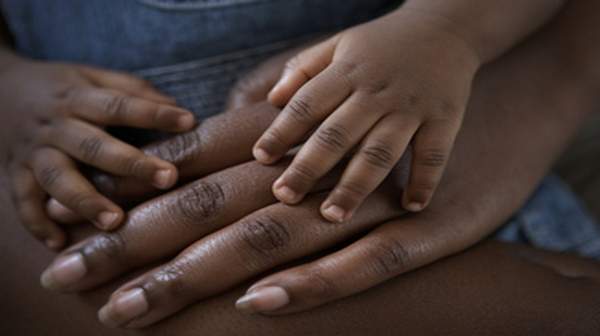What's in this article?
What Is Sickle Cell Disease?
The term sickle cell disease (SCD) describes a group of inherited red blood cell disorders. People with SCD have abnormal hemoglobin, called hemoglobin S or sickle hemoglobin, in their red blood cells.
Hemoglobin is a protein in red blood cells that carries oxygen throughout the body.
“Inherited” means that the disease is passed by genes from parents to their children. SCD is not contagious. A person cannot catch it, like a cold or infection, from someone else.
People who have SCD inherit two abnormal hemoglobin genes, one from each parent. In all forms of SCD, at least one of the two abnormal genes causes a person’s body to make hemoglobin S. When a person has two hemoglobin S genes, Hemoglobin SS, the disease is called sickle cell anemia. This is the most common and often most severe kind of SCD.
Hemoglobin SC disease and hemoglobin Sβ thalassemia (thal-uh-SEE-me-uh) are two other common forms of SCD.
How common is Sickle Cell Disease?
Sickle cell disease affects millions of people worldwide. It is most common among people whose ancestors come from Africa; Mediterranean countries such as Greece, Turkey, and Italy; the Arabian Peninsula; India; and Spanish-speaking regions in South America, Central America, and parts of the Caribbean.
Sickle cell disease is the most common inherited blood disorder in the United States, affecting 70,000 to 80,000 Americans. The disease is estimated to occur in 1 in 500 African Americans and 1 in 1,000 to 1,400 Hispanic Americans.
What are the symptoms of Sickle Cell Disease?
Sickle cell disease prevents oxygen from reaching the spleen, liver, kidneys, lungs, heart, or other organs, causing a lot of damage. Without oxygen, the cells that make up these organs die. For example, the spleen is often destroyed in these patients, leading to some loss of immune function. As a result, these patients often experience frequent infections.
The red blood cells of patients with sickle cell disease don’t live as long as healthy red blood cells. So people with this disorder often have low red blood cell counts (anemia), which is why this disease is commonly referred to as sickle cell anemia.
When sickle-shaped red blood cells get stuck in blood vessels, patients can have episodes of pain called crises. Other symptoms include delayed growth, strokes, and jaundice (yellowish skin and eyes because of liver damage).
Organ damage and other complications often shorten patients lives by about 30 years.
What Causes Sickle Cell Disease?
Sickle cell disease is caused by a genetic abnormality in the gene for hemoglobin, which results in the production of sickle hemoglobin. When oxygen is released from sickle hemoglobin, it sticks together and forms long rods, which damage and change the shape of the red blood cell. The sickle red blood cells causes the symptoms of sickle cell disease.
Children are born with sickle cell disease; it is not contagious. It occurs when a child inherits two sickle hemoglobin genes, one from each parent. About 2,000 babies are born with sickle cell disease each year in the United States. People who inherit only one sickle hemoglobin gene are carriers (sickle cell trait) and do not have anemia or painful sickle cell crises. They may, though, have a slightly higher incidence of certain conditions such as blood in the urine or urinary tract infections. About 2 million Americans have sickle cell trait.
How Do People Get It?
Sickle cell disease is not contagious , so you can’t catch it from someone else or pass it to another person like a cold or an infection.
People with sickle cell disease have it because they inherited twosickle cell genes, one from each parent.
A person who inherits the sickle cell gene from only one parent will not develop the disease, but will have something called sickle cell trait . People with sickle cell trait often don’t have any signs of the disease, but they can pass the sickle cell gene on to their own children.
People with sickle cell trait may never know that they carry the gene. That’s why doctors recommended that anyone who’s not sure if they carry the sickle cell gene get tested to find out for sure. Doctors use a special blood test called a hemoglobin electrophoresis(pronounced: eh-lek-tro-fuh-REE-sis) to look for sickle hemoglobin in a person’s blood.
The National Institutes of Health (NIH) recommends that all newborns be screened for sickle cell disease. Testing at birth is now required in every U.S. state. This helps infants with sickle cell disease get the care and treatment they need right away.
How is Sickle Cell Disease Treated?
Babies and young children with sickle cell disease must take a daily dose of penicillin to prevent potentially deadly infections. Patients also take folic acid, which helps build new red blood cells.
Doctors advise people with sickle cell disease to get plenty of rest, drink lots of water, and avoid too much physical activity.
Blood transfusions are commonly done to provide a patient with healthy red blood cells.
People with more severe cases of the disease can be treated with a bone marrow transplant. This procedure provides the patient with healthy blood stem cells from a donor, ideally a sibling.
Treatment of sickle cell crisis includes:
- Opioid pain medications (for example, morphine)
- Anti-inflammatory medications (for example, ibuprofen)
- Antibiotics for infection
- Oxygen
- Intravenous or oral fluids
Transfusions of red blood cells are given for severe anemia, to prevent strokes, and before surgery. Sometimes an exchange transfusion is performed with a special machine that removes the abnormal sickle red blood cells and replaces them with normal red blood cells.





